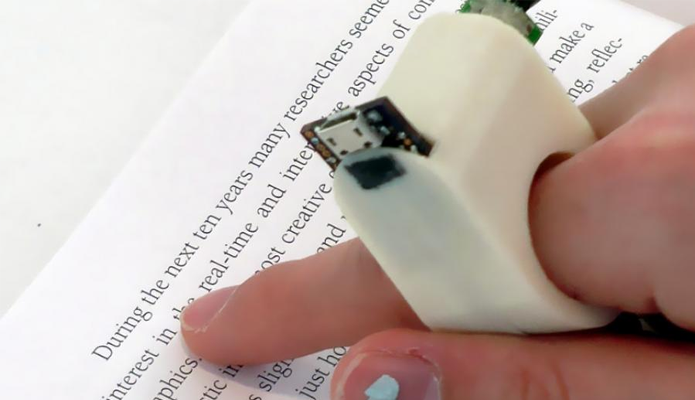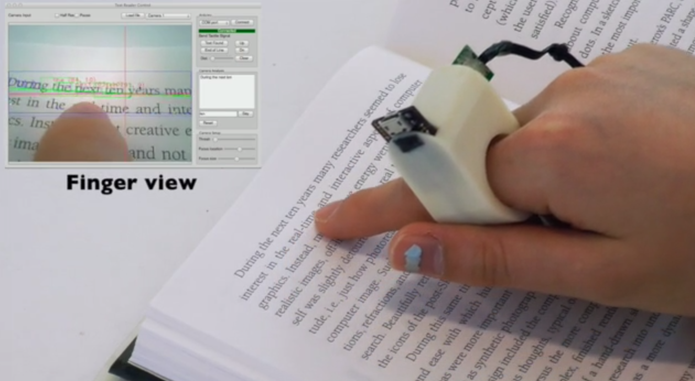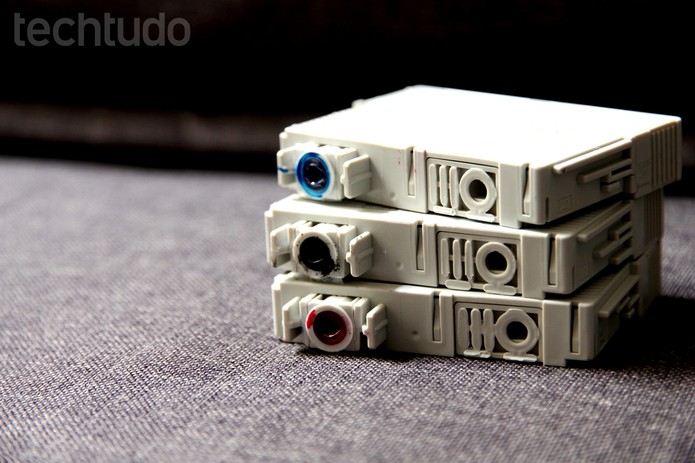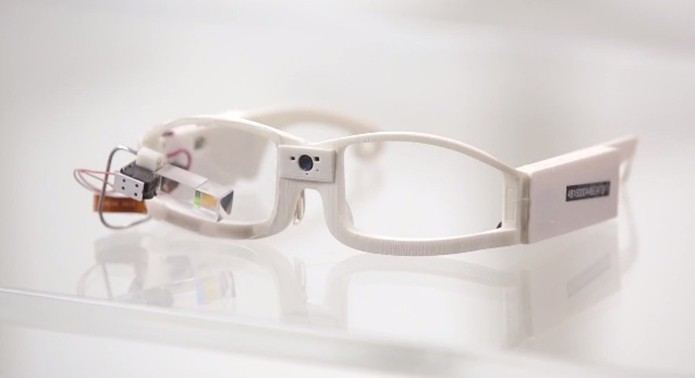By Jennifer Ouellette | April 19, 2014 |
This week fans of the night sky and space exploration celebrated the Birth of Human Spaceflight, with Yuri’s Night. Related (kinda): “You can’t take the sky from me.” The First Instagram From Space Is Of An Astronaut In A Firefly T-Shirt.
In honor of the Easter holiday, What Happens When You Throw a Peep Out an Airlock? Because inquiring minds need to know!
Star gazers flocked to Griffith Park to see the “blood moon” and total lunar eclipse earlier this week, and some might fine photos were taken of this celestial event, thanks to the perfect alignment of sun, Earth and moon, also known as a syzygy. Of course, this was just the first in an eclipse tetrad; there’s more to come. will put on the best show?
New precise measurements of the mass of the top quark bring back the question: Is our universe inherently unstable?

Best. Animated. GIF. Ever. (h/t: Joe Hanson) Source: http://giphy.com/gifs/neil-141amBdjqs9Vvy
If you missed the latest episode of Cosmos, you can read my recap in the Los Angeles Times: “Deeper and deeper still.” It included one of favorite physics demonstrations, which made for the Best Animated GIF Ever (right; click on image to get the full effect). Once again, not everyone was happy. For instance, here’s What Cosmos Got Wrong About Thales of Miletus, the World’s First Scientist.
Interesting bit of historical trivia: Before the Neil deGrasse Tyson version and update of Carl Sagan’s landmark television series, Cosmos, there was Alexander von Humboldt, and his enormously influential book of the same title (Kosmos), printed in 1845-1862. Bonus: Remember when Creationists got all in a tizzy, demanding “equal time” on the show? Funny Or Die obliged with Creationist Cosmos: “The answer is — God did it!”
Mystery object in Saturn’s ring may be a new baby moon: Peggy.
Time’s Arrow Traced to Quantum Source: Cups of coffee cool, buildings crumble, because of quantum “entanglement.”
How Mathematicians Used A Pump-Action Shotgun to Estimate Pi.
The Vulgar Mechanic and His Magical Oven – A Renaissance alchemist pioneers feedback control.
This Stellar Fusion Game sets you the task of nucleosynthesis, building hydrogen into iron.
Reality’s Never-Ending Story: quantum version of natural selection could enable universe to write itself into being.
Invoking dark matter as a means to explain the excess of positrons observed last year by the Alpha Magnetic Spectrometer (AMS-02) experiment might not be necessary, according to physicists in Europe. Instead, they say, the entire dataset can be explained purely in terms of known astrophysical processes such as pulsars and cosmic rays.
Check out this new documentary, “LIGO, A Passion for Understanding,” which follows scientists hunting for gravitational waves with the Laser Interferometer Gravitational Observatory.
The Mystery of Insect Flight: “NYU professor Leif Ristroph has a lot of projects exploring flapping flight on smaller scales…”
The Astro Alphabet: Every letter holds a special story. “L is for Libration, which makes our moon rock.”
Cosmic slurp: Researchers use supercomputers to understand and predict signs of black holes swallowing stars.
Talking quantum mechanics with second graders: “Can I be a quantum physicist, or is it only for the boys?”
According to a new simulation of bird flock hitting a wall: it’s more like a “crack” than a “splat.”
String Experiment: Capillary Action is Complicated, even in a simple cup of tea.
We have a new exoplanet: Meet Kepler-186f! Almost-Earth Tantalizes Astronomers With Promise of Worlds to Come.
Vitruvian Geology – Leonardo da Vinci and the Realistic Depiction of the Earth’s Surface.
How the Sun *really* shines: the basics of nuclear fusion.
Until last Monday, only two types of hadron were known, but CERN’s LHCb experiment just proved there is a third way.
Ten things you might not know about particle accelerators, e.g. a ferret that once cleaned accelerator components.
Cherry Blossom Grown from Space Seeds Makes for an Amazing Tale.
Finally, A Way To Harvest Hydroelectric Energy From Toilet Flushes.
Check out The New Rainbow Particles (made from “rare earth upconverting nanocrystals”) That Will End Counterfeiting Forever — okay, maybe not forever. But they’ll certainly help.
Speaking of materials, here are five wonder materials that could change the world. “Materials such as graphene and shrilk are so new that the scientists who discovered them hardly know what to do with them – they only know they might yet transform our lives.”
Stadium Acoustics Pump Up the Volume: At sports venues designed to maximize crowd atmosphere, beware of hearing loss.
Why nobody can tell whether the world’s biggest quantum computer is a quantum computer. Related: Robert Redford 1992 film, Sneakers, foretold Shor’s quantum computing bombshell. “In real life progress is usually slower than in movies.”
Five Thirty Eight Breaks Down the Statistics of Bob Ross Paintings. 91 percent featured at least one “happy tree.”

Credit: Piotr Jabłoński, https://www.facebook.com/nicponimsky
Tomcat Brothers: Piotr Jabłoński: the illustrated adventures of two small brothers in futuristic space helmets who explore the world with a feline pal, a giant cat mural that follows them everywhere, provided there’s a wall.
Max Tegmark weighed in at the New York Times with a few comments on the Higgs boson and the BICEP2 results: the latter brought us “back to basics,” agreeing beautifully with the simplest models. Richard Easther also had some thoughts a month after the big announcement. Related: Star dust casts doubt on whether we really did detect gravitational waves left over from the big bang.
Why We Should Care About the Origins of the Universe – “any step closer to figuring out the world’s beginnings is a step toward understanding ourselves.”
Meet the Brothers Chudnovsky. “Watch how two brilliant and eccentric Russian number theorists, the Chudnovsky brothers, tackle a math problem so large it draws comparisons to analyzing the human genome. The problem involves stitching together fractured images of one of the most beautiful and complex works of art to survive from the Middle Ages—seven famous tapestries known as ‘The Hunt of the Unicorn’ housed at the Metropolitan Museum of Art. The brothers attempt to solve the visual puzzle using a home-made supercomputer built with parts from Home Depot.”
Out of the Deep Freeze: Captain America, the Winter Soldier and the Wood Frog.
CSI: Insect Edition explores why thermodynamics matters: “the forensic equations used to calculate time of death don’t factor in maggot heat.” Continuing a theme, we also have CSI: Westeros, with [SPOILERS!] the Chemistry of The Strangler: “a poison made from a plant – plus sugar, spice, & everything not-so-nice.”
Rare Audio: Albert Einstein explains “Why I am an American” on the day he passed his US citizenship test in 1940.
When Nature Speaks, Who Are You Hearing? Adam Frank’s meditation on sacredness. “In the end, what we have is a conversation, a lifelong dialogue with life. It’s a conversation expressed not in words but in the immediacy of experience and the poetry of the one, single now. And that is exactly where the experience of sacredness lives.”
MIT Wants to Mass Produce These Floating Nuclear Reactors.
The Quantum Physics of Harry Potter (video), featuring physicist Krister Shalm and magician Dan Trommater
Material limitations hamper quest for space elevator. Apparently there’s no known material strong enough to extend a cable all the way from earth into near-earth orbit. Bummer.
Ibn al-Haytham: The Muslim Scientist Who Birthed the Scientific Method.
Astronomers: ‘Tilt-a-worlds’ could harbor life. A fluctuating tilt in a planet’s orbit sometimes helps.
Jupiter’s Radio Emissions Could Reveal the Oceans on Its Icy Moons, Say Planetary Geologists. We should be able to use them like ground-penetrating radar to study the oceans on Europa, Ganymede, and Callisto.
What’s The Purpose Of The Universe? Here’s One Possible Answer.
The Problem of Now: “The origin of the problem is not in the mathematics, but in the failure to distinguish subjective experience of physical existence from objective truth.”
Wee math in Portland, OR: What, approximately, is the percentage of human wee in water supply, both before and after the wee was added to reservoir?
Microrobots Work Together to Build with Metal, Glass and Electronic Components.
Fun with Augmented Reality: This Futuristic Sandbox Lets You Build Erupting Volcanoes and Flowing Rivers.
Beating the Odds: Are Goats Better Gamers than Sheep at the Shell Game?
“The authors of a recent PLOS ONE article updated this age-old game to find out whether goats and sheep, given information upfront about which cup the food was (or was not) under, could find the food again once the cups were replaced. The ability to connect an experience with an imagined result (“If I see that the cup is empty, the other must have the food!”) is called inferential reasoning, and has been tested in dogs, primates, and birds.”
The perils of time travel: All The Ways You Can Screw Up Your Own Timeline. Related: Action Bill, A LEGO Stop-Motion Short Film About William Shatner Traveling Back in Time to Kill William Shakespeare.
Losing My Math: on fluid intelligence loss and the crystallized intelligence that comes with experience.
Escape Velocity, A Giant Animatronic Astronaut, was a highlight to those attending Coachella music festival this year.
Using strong lasers, investigators observe frenzy of electrons in a new material just one atom thick.
The WORST thing for someone to try to do after a nuclear explosion is to get in a car and drive away.
Starfish glue reveals its secrets under the microscope: Temporary adhesive holds promise for surgery and tissue engineering. …
Image gallery: The Coolest Spaceships Ever Made, Compared by Size.
A Glow-in-the-Dark Highway – Energy-trapping paint is bringing a Tron-like aesthetic to the roads of the Netherlands. Related: Three giant mirrors on a mountain reflect sunlight onto a small Norwegian town that gets little of it in the winter.

Credit: Gary Drostle, http://www.drostle.com
Artist Gary Drostle harnesses interference patterns of visible light passing thru water to create fish pond mosaics. Per io9:
“The bright white circles and curves, and the correspondingly darker shadows, trace the constructive interference of the water waves. Where the crests align with crests or troughs with troughs, these higher amplitude waves create more extreme concave or convex surfaces. The water waves act as lenses that refract the light more severely into patterns of sharper contrast. Destructive interference, where crests and troughs cancel out, leave patches of stillness on the water, allowing light to pass through without focusing or divergence.”
Raman spectroscopy bites into tooth decay: Mineral distribution signals discriminate healthy enamel from cavities.
Anxiety, Mathematics, and Words of Kindness. “When we teach math, we organize things for clarity. Unfortunately, this creates the illusion that there’s always an obvious, linear progression of concepts. It hides the messy truth of how the knowledge was actually acquired: through many twists and turns in a process of creative exploration. And, as you progress in mathematics, you have to bring more and more creativity to bear. This has many implications, but the most germane is that it’s very difficult to be creative when you’re in a state of panic.”
Fraud, Failure, and Frustration: This Is the Story of America’s First Energy Transition.
Pluto May Have Deep Seas and Ancient Tectonic Faults. Related: Fluid Mystery: How Did Mars Ever Have Liquid Water?
Brookhaven Relativistic Heavy Ion Collider: The second-largest particle collider is the underdog of experimental physics.
Physics Professor’s Picture Book Aims to Spark Interest in Science Among Youth.
Flow patterns can change dramatically as fluid speed and Reynolds number increase.
An Inside Look at NASA’s Deep Space Network, which celebrates 50 years of operation this year.
Lessons of Immortality and Mortality From Carl Sagan, a moving essay by his daughter Sasha.
Changing phases: Q&A with John Goodby, who has has discovered new forms of matter and invented new materials.
“Pyro-Board” is a planar take on the Rubens’ tube that can turn music into patterned, leaping flicks of fire.

































